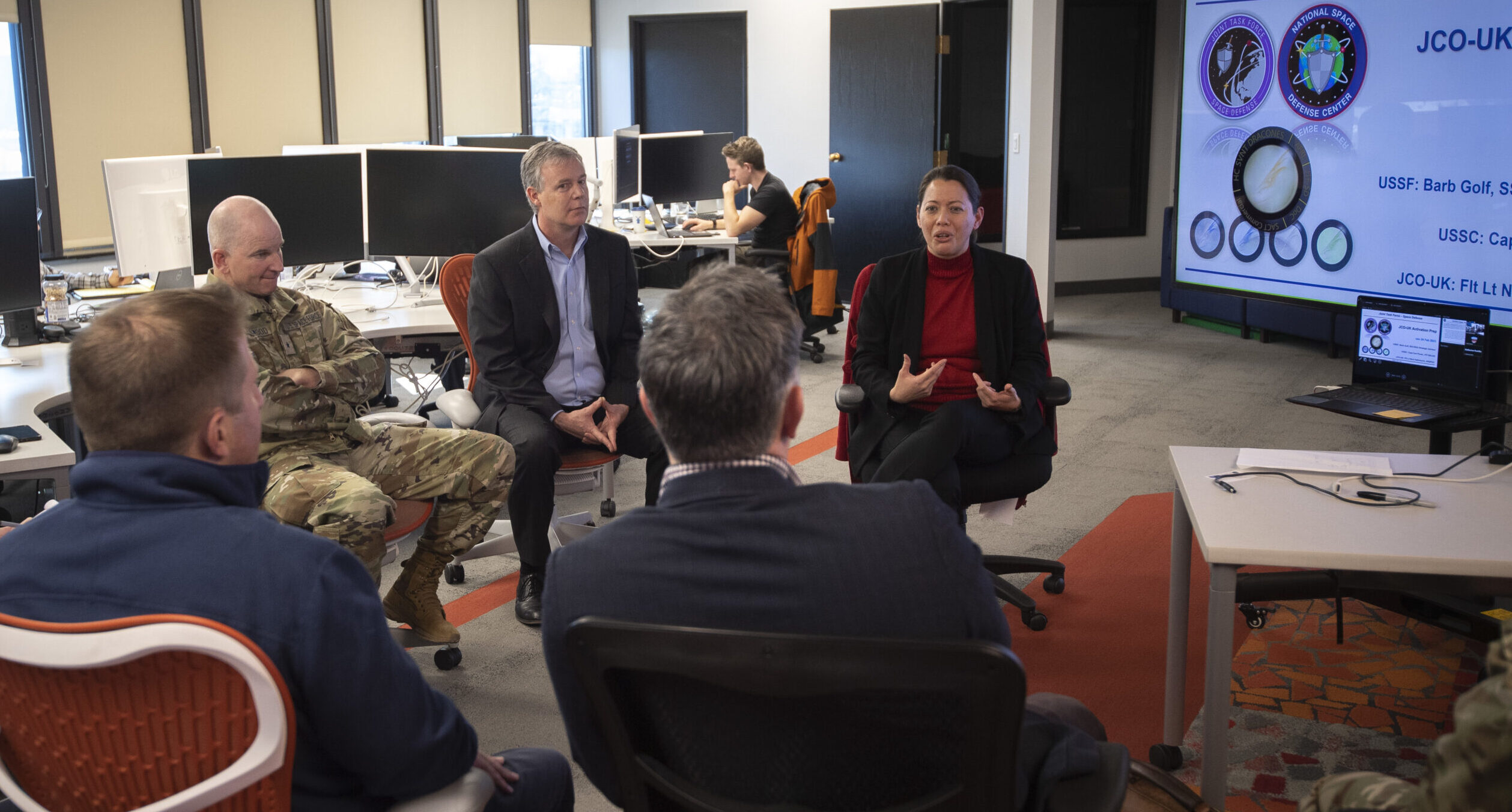Products You May Like
WASHINGTON — An organization formed under the U.S. Space Command to harness commercial technology for space domain awareness is taking on broader responsibilities, including using commercial space systems for battlefield intelligence.
“We’re expanding,” Barbara Golf, U.S. Space Force strategic advisor and head of the Joint Task Force-Space Defense Commercial Operations (JCO), told attendees Sept. 20 at the Advanced Maui Optical and Space Surveillance Technologies (AMOS) Conference.
The JCO, based at Schriever Space Force Base in Colorado, was formed in 2020 as an extension of the National Space Defense Center. The NSDC is a joint military and intelligence organization that coordinates efforts between government agencies and commercial partners to monitor space activities, detect threats and plan operations.
Currently operating as a global virtual operations center with allied nations, the JCO is venturing into new areas, Golf announced. These include tracking electronic signals emissions to identify jamming sources and delivering battlefield intelligence to military commands using commercial sources like Earth observation satellites.
Pilot imagery program to become operational
A key development is the transition of the Tactical Surveillance, Reconnaissance, and Tracking (TacSRT) program from pilot to operational status. Golf said the JCO will take over the program in several phases starting Oct. 1. TacSRT leverages commercial satellite imagery and analytics to provide timely surveillance and reconnaissance products, often within hours of a request.
“The information is completely shareable in a tactically relevant timeline for folks who need it quickly,” Golf explained. The JCO initially will support U.S. Southern Command and will extend its services to other combatant commands over the next three months.
The transition of TacSRT from a pilot to an operational program marks a key moment in its evolution, Golf said, emphasizing that the shift aligns with the broader U.S. Space Force strategy of integrating commercial solutions into military operations.
“They use commercial imagery analytics to support high-interest events, like humanitarian assistance, disaster relief, and illegal resource extraction such as illegal fishing, mining, and logging,” she explained. Under the JCO, there will be closer coordination with U.S. intelligence agencies, including the National Geospatial Intelligence Agency (NGA), to avoid redundant procurement of satellite imagery.
“We don’t double buy,” Golf said. “We take everything we purchase and put it back in those libraries so it can be a very fruitful collaboration.”
Golf emphasized that the JCO’s use of commercial technology is driven strictly by mission requirements. “Whatever it is that you’re using, it’s got to meet the mission,” she stated.
Focus on commercial, allied partnerships
Companies interested in working with the JCO are encouraged to reach out through the Space Systems Command’s Commercial Space Force “Front Door” portal, Golf said. To evaluate potential commercial products, the JCO hosts events known as Sprint Advanced Concept Training.
To be considered, commercial products must be compatible with the “unified data library,” a cloud-based repository integrating commercial and government data. “The UDL is our backbone, operating at unclassified levels and then sending our data up to secret and top secret,” Golf said. “If you’re not compliant with the unified data library, we can’t put you on contract.”
The JCO’s global partnerships are central to its operations, Golf noted. There are 28 nations collaborating under a “follow-the-sun” model for round-the-clock monitoring. This approach avoids the need for personnel to work outside normal business hours. For instance, the Americas cell includes the U.S., Canada, Brazil, and Chile, while the Meridian cell is led by the U.K. from RAF High Wycombe in England, and the Pacific cell encompasses Australia and New Zealand.
